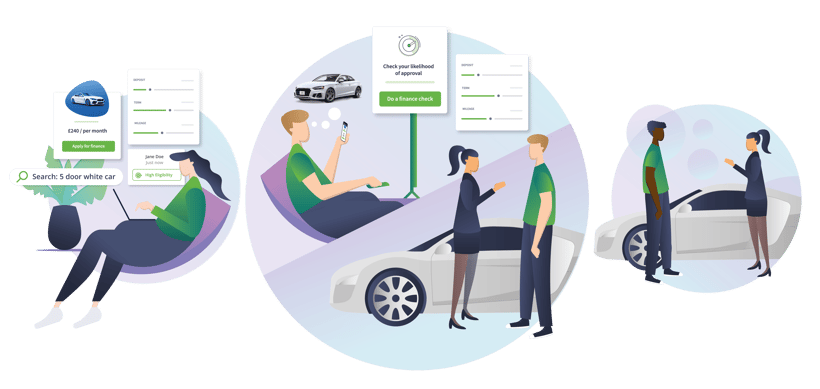In the ever-evolving world of automotive retail, the way people purchase vehicles has undergone a significant transformation. With the rise of digital platforms and online marketplaces, consumers now have more options than ever when it comes to buying a vehicle. This blog aims to shed light on the differences between three types of vehicle buyers: online buyers, showroom buyers, and channel hoppers. Understanding these distinct buyer profiles can help us better comprehend the changing landscape of automotive retail.
Online Buyers
As the name suggests, online buyers prefer the convenience and accessibility of the internet when it comes to purchasing a vehicle. These buyers typically conduct extensive research, comparing prices, features, and reviews across multiple online platforms. They value the ability to browse a wide range of vehicles from the comfort of their homes, saving time and effort by avoiding physical showrooms. Online buyers often appreciate the transparency and ease of online transactions, with many platforms offering financing options and doorstep delivery. They tend to be tech-savvy, relying on digital tools to assist them in the decision-making process.
Advantages:
- Convenience: Online buyers can browse and compare vehicles at any time, from anywhere with an internet connection.
- Extensive information: They have access to comprehensive vehicle specifications, reviews, and user ratings.
- Transparency: Online platforms often provide transparent pricing and financing options, allowing buyers to make informed decisions.
Limitations:
- Limited physical interaction: Online buyers miss out on the tactile experience of seeing and test-driving vehicles before making a purchase.
- Trust concerns: Some buyers may have reservations about the accuracy of online listings or potential scams.
Showroom Buyers
Showroom buyers are traditional in their approach, preferring the tangible experience of visiting physical dealerships and showrooms. They appreciate the opportunity to see, touch, and test-drive vehicles before committing to a purchase. Showroom buyers value the personal interaction with sales representatives who can answer questions, provide expert advice, and guide them through the buying process. They find comfort in the physical presence of the dealership, allowing them to establish a sense of trust and credibility. Showroom buyers tend to be more cautious, ensuring that they make an informed decision based on their own firsthand experience.
Advantages:
- Hands-on experience: Showroom buyers can physically examine and test-drive vehicles, helping them gauge comfort and suitability.
- Personalised assistance: They receive guidance from knowledgeable sales representatives who can address their queries and concerns.
- Trust-building: Face-to-face interactions help establish trust and confidence in the purchase.
Limitations:
- Time-consuming: Visiting multiple dealerships can be a time-intensive process, especially when searching for specific models or features.
- Limited inventory: Showrooms may not have the same variety of vehicles as online platforms.
- Potentially biassed information: Sales representatives may be inclined to promote certain models or options.
Channel Hoppers
Channel hoppers are a hybrid breed, combining elements of both online and showroom buying. They leverage the advantages of online research and the tactile experience of physical showrooms. Channel hoppers typically begin their vehicle-buying journey online, gathering information and shortlisting potential options. However, they feel the need to visit showrooms to physically inspect and test-drive their chosen vehicles before finalising a purchase. These buyers seek a balance between convenience and hands-on evaluation, understanding the value of both digital platforms and traditional showrooms.
Advantages:
- Comprehensive research: Channel hoppers benefit from the extensive information available online, enabling them to narrow down their options.
- Tangible experience: They have the opportunity to examine and test-drive vehicles before making a decision.
- Informed decision-making: Channel hoppers can strike a balance between convenience and personal interaction to make confident purchases.
Limitations:
- Time and effort: Channel hoppers invest additional time in both online research and visiting showrooms.
- Decision fatigue: The abundance of information from multiple channels can sometimes be overwhelming.
The world of vehicle buying has diversified significantly, catering to the preferences of a range of consumers. Online buyers prioritise convenience and digital accessibility, while showroom buyers relish the tangible experience and personal interaction. Channel hoppers, on the other hand, seek a middle ground, leveraging the advantages of both online and showroom experiences. Understanding these distinct buyer profiles can help automotive retailers adapt their strategies and cater to the evolving needs of their customers. Ultimately, the success of automotive retail lies in finding the right balance between online convenience and the physical experience of showrooms.
